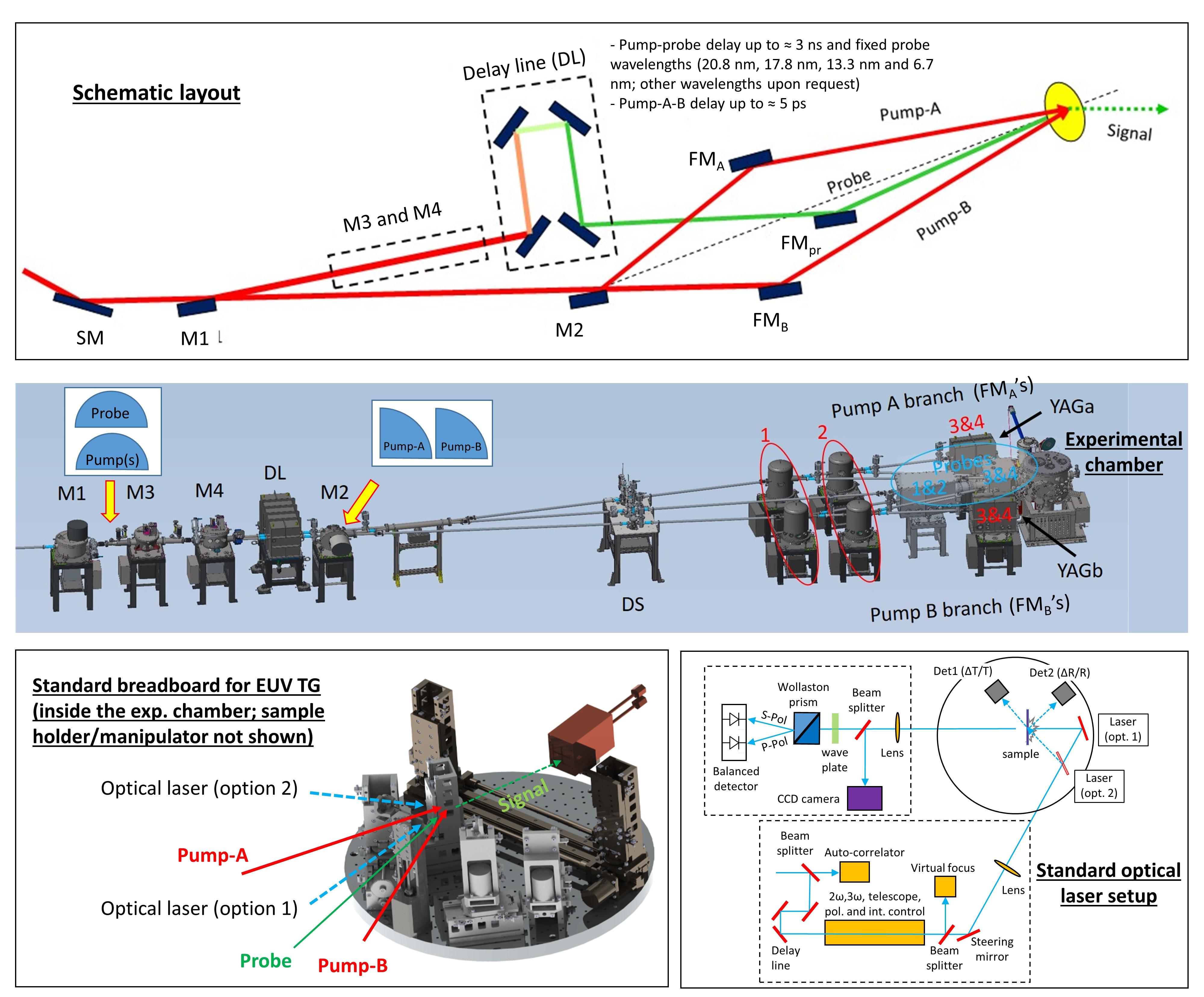The EIS-TIMER instrument is purposely designed to exploit the time structure, coherence properties and harmonic content/multi-color operation of the FERMI FEL source in order to carry out extreme ultraviolet/soft x-ray transient grating (XTG) experiments. In such kind of experiments two non-collinear FEL pulses (pump-A and pump-B) are overlapped, in time and space, at the sample to generate an interference pattern with a spatial periodicity in the 2-200 nm range. The dynamical response to such a nanoscale modulation, imposed by the XTG excitation, is monitored via transient diffraction of a third, time-delayed, FEL pulse pulse (probe). The XTG signal encodes information on several kinds of dynamics, ranging from transport processes (e.g. spin and heat diffusion) to collective lattice excitations (e.g. phonons) and fast electron dynamics; all this with the wavevector selectivity imposed by the XTG pattern.
The implementation of this experimental scheme, nowadays used only with optical lasers, to the EUV/soft x-ray range allows probing lattice dynamics in the mesoscopic regime (10's of nm wavelength range) that cannot be accessed by available instruments. This capability is expected to be of the highest relevance for studying, e.g., the physics of disordered solids and nanoscale heat transport, which is crucial aspects for forefront nanoelectronics. The XTG approach can be also used to study other kind of nanoscale dynamics, as for isntance magnetic excitations or structural relaxation in liquids.
In a broader context, XTG experiments is a specific application of EUV/soft x-ray four-wave-mixing (XFWM). The exploitation of this broader class of light-matter interactions has been so far conceived only theoretical, pointing out a great potential in a manifold of applications. Indeed, XFWM-based spectroscopies based on the exploitation of the elemental/chemical selectivity (provided by EUV/soft x-ray absorption edges) could be a unique experimental tool to gain information on coherences between vibrational, valence and core excitations, which are critical for understanding, e.g., charge and energy transfer dynamics in light harvesting or emitting devices.
Seed Laser for Users (SLU)
EIS-TIMER
PI-MTE
Sample
Manipulator or Sample stage
Balanced photodiode
Detection
PI-MTE
Detection
PIXIS
Detection
- Time-resolved studies
- Time-resolved studies
- Coherent scattering
- Inelastic scattering
- Time-resolved scattering
- TANGO
- Tensors of rank 0 - 3
- HDF
- Matlab, Python and Igor (users use/develop their own codes)
